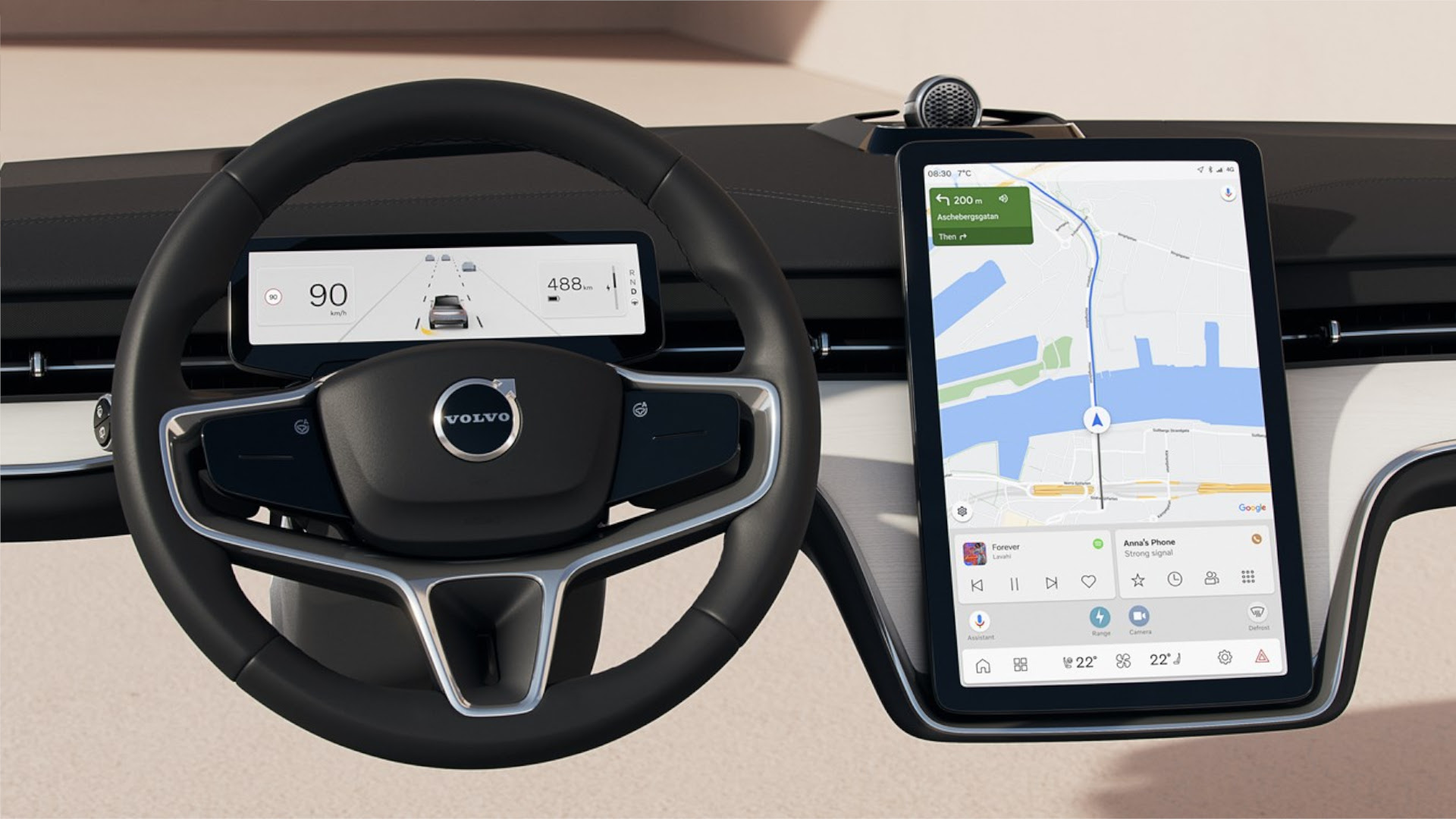

While some automakers are moving back to using buttons, Volvo isn’t one of them. The upcoming Volvo EX90 flagship SUV will prioritize touchscreen controls above traditional interfaces in much the same way Tesla and Rivian have done as of late.
In a video posted to YouTube, Thomas Stovicek, head of user experience at Volvo, explained the company’s ethos regarding the new vehicle’s interior. The idea is to reduce information overload on the driver when out on the road. The design intends to offer “complexity made simple” by offering up all the functionality the driver needs without being intrusive.
You can see the video below.

Cars are adding new functionality all the time, which can become overwhelming, Stovicek explained. “We want to make all those capabilities available in a simplified way.”
To this end, the EX90 will feature two touchscreens that serve as the driver’s interface with the vehicle. Like many other manufacturers, Volvo has chosen to go with a large portrait display in the center of the dash, which will provide controls and information to the driver. A smaller secondary display in the cluster position will then provide driving information at a glance.
Contextual relevance is key to Volvo’s design. “The experience is about providing the right information at the right time in the right place,” Stovicek said. Upon entering the car, the welcome screen provides access to commonly used controls. This then gives way to a navigation-focused display when driving. Other features like media and phone controls are then presented by the screen when contextually relevant.



It’s not clear where the volume knob will end up.
Volvo also put great focus on how the car’s interfaces work across regular, assisted driving, and autonomous driving modes. The information shared on the various displays changes to suit the given drive mode as needed. In particular, assisted and autonomous modes present sensor data on the cluster screen to show the driver how the car is perceiving the road environment and other surrounding vehicles.
Fans of classic, tactile controls like buttons, switches, and sliders will find little to like here. However, those that prefer to have everything accessible via touchscreen will find plenty to enjoy.
Got a tip? Let the author know: lewin@thedrive.com